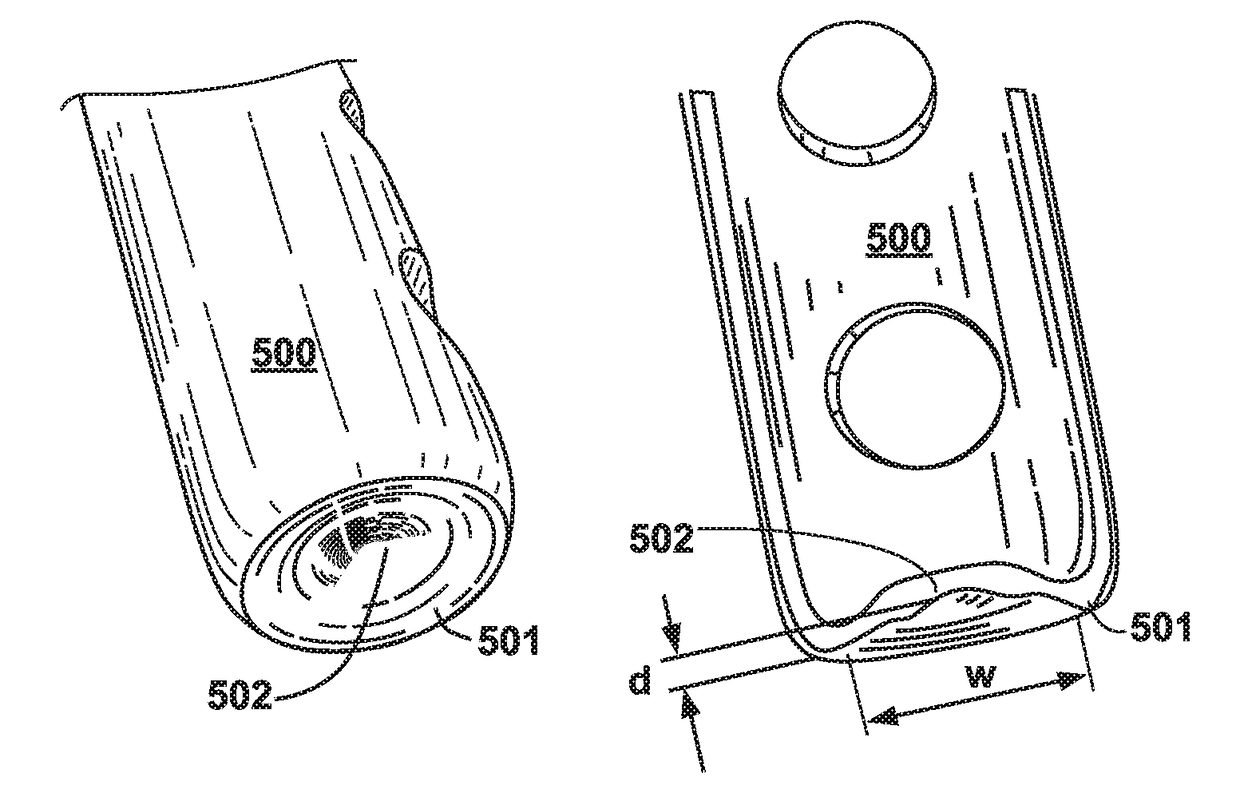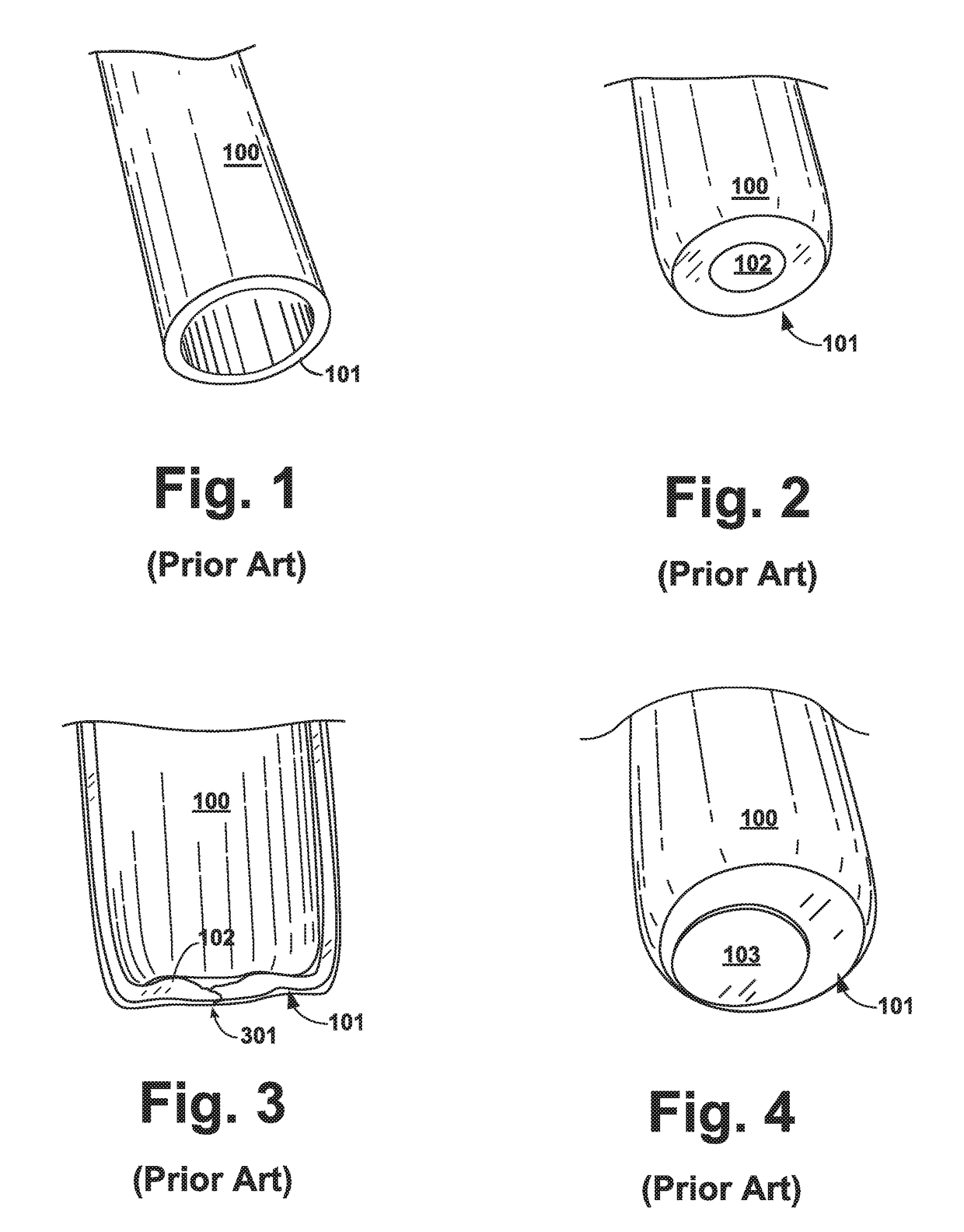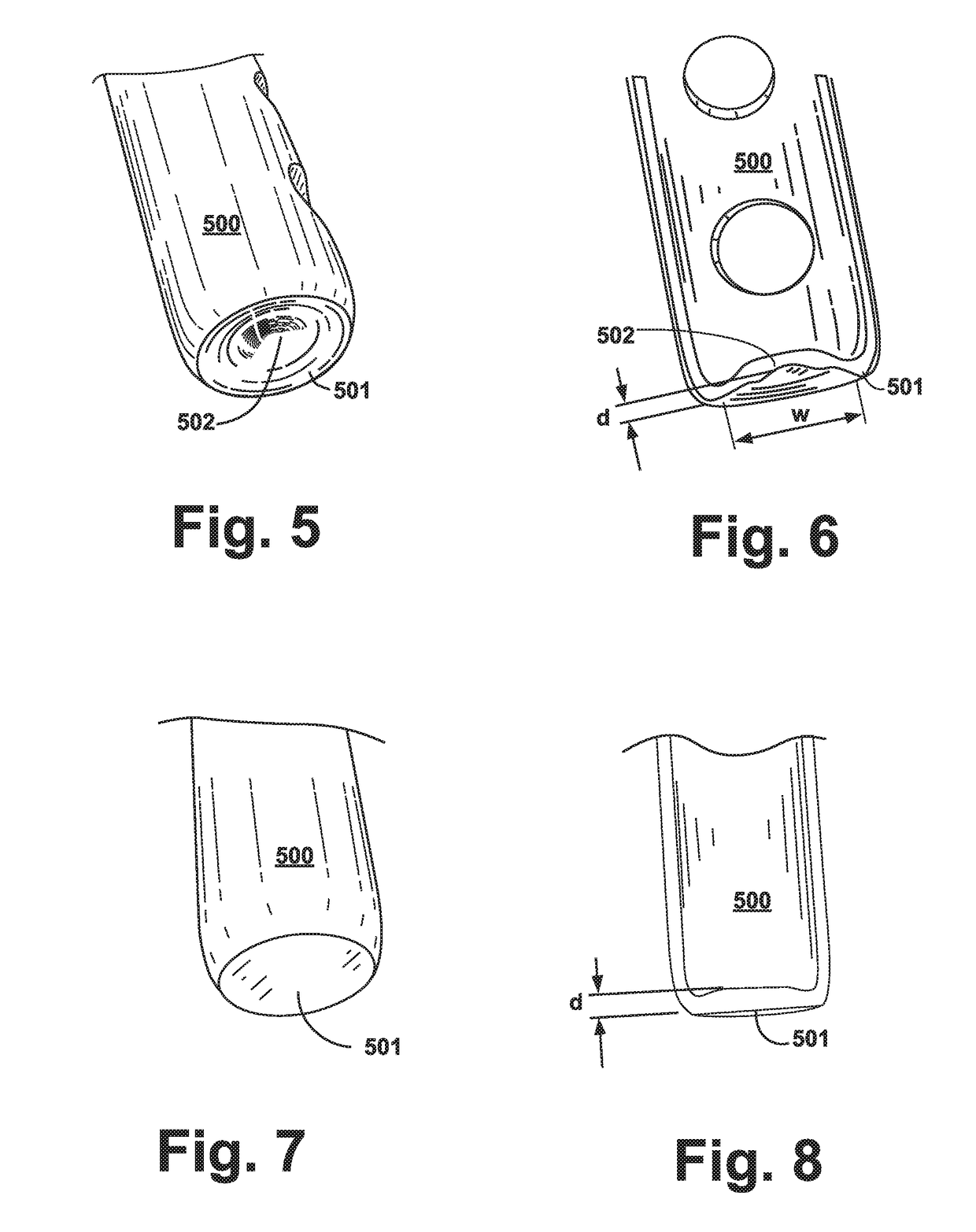Tube end sealing method
a sealing method and end technology, applied in the direction of tubular elements, heat exchange apparatus, lighting and heating apparatus, etc., can solve the problems of insufficient prior art method, increased cost and time consumption, and additional challenges in closing the end of aluminum tubes, etc., to achieve the effect of reducing cost and time, and reducing the thickness and strength
- Summary
- Abstract
- Description
- Claims
- Application Information
AI Technical Summary
Benefits of technology
Problems solved by technology
Method used
Image
Examples
Embodiment Construction
[0022]FIG. 1 is a partial perspective view of a prior art aluminum tube 100, showing an open end 101 of the tube 100 in need of closure.
[0023]FIG. 2 depicts the tube 100 after the tube end 101 has been closed via a spin close operation that is known in the art. The spin close operation is generally performed in a tube end closing machine. A bottom closure 102 now encloses the open end of the tube 100. However, the bottom closure is thin and not complete in the center of the tube end 101.
[0024]FIG. 3 is a cross section of the tube 100 of FIG. 2. Close examination reveals that there is a crack 301 near the center of the tube end 101. Cracks similar to this are a normal result from the spin closing technique described herein. These cracks can leak and cause the tube to fail under pressure. If the tube 100 were made of copper, brazing the end of copper tubing after a spin close operation generally works well to reinforce the end of the tube. However, this method doesn't work as well for...
PUM
| Property | Measurement | Unit |
|---|---|---|
| width | aaaaa | aaaaa |
| depth | aaaaa | aaaaa |
| thickness | aaaaa | aaaaa |
Abstract
Description
Claims
Application Information
 Login to View More
Login to View More - R&D
- Intellectual Property
- Life Sciences
- Materials
- Tech Scout
- Unparalleled Data Quality
- Higher Quality Content
- 60% Fewer Hallucinations
Browse by: Latest US Patents, China's latest patents, Technical Efficacy Thesaurus, Application Domain, Technology Topic, Popular Technical Reports.
© 2025 PatSnap. All rights reserved.Legal|Privacy policy|Modern Slavery Act Transparency Statement|Sitemap|About US| Contact US: help@patsnap.com



